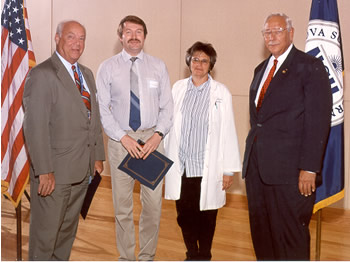Investigation into the Use of Noninvasive Neurometric Monitoring as Means of Evaluating the Optimal Use of Low Intensity Laser Therapy for Head and Neck Pain of the Trigemina Neuralgia Type
Grant Winners
- Paul Bradley, M.D. – College of Dental Medicine
- Yuri Zagvazdin, Ph.D. – College of Medical Sciences
Deans
- Robert Uchin – College of Dental Medicine
- Harold Laubach – College of Medical Sciences
Abstract

Trigeminal Neuralgia, is a very severe form of Head and Neck Pain which is conventionally managed by anti-convulsant drugs or neurosurgical procedures. However, many elderly sufferers experience toxic effects from the drugs or are reluctant to undergo surgery. Low Intensity Laser Therapy (LILT) provides a noninvasive low morbidity alternative type of treatment which can be used on an outpatient basis in combination with low dose medication. The near infrared wavelength employed (820nm at milliwatt power ratings) has been shown to have stabilizing effects on pain fibres by influence on sodium potassium ATPase production plus acupuncture like effects considered to involve generation of endorphins and serotonin. This project sets out to quantify the phenomenon of peripheral and central sensitization of the nervous system, known to occur in neuropathic pain of the Trigeminal Neuralgia type by the use of peripheral neurometry and evoked cortical potentials respectively in an initial group of twenty-four patients with Trigeminal Neuralgia in both typical and atypical types in a study already granted IRB. The study is designed to provide quantitative data on which to base diagnosis and response to treatment with a view particularly to determining optimal dosimetry for LILT. Prototype apparatus for combined neurometery and evoked cortical potentials, provided by a Miami medical equipment firm, has been proved to be effective in an initial sample of seven subjects with Head and Neck Pain by the investigators who are a clinician from the College of Dental Medicine, qualified in dentistry and medicine and a neurophysiologist from the College of Medical Sciences with a doctorate in philosophy. The majority of the patient's examined showed increased neurometric thresholds, decreased evoked potential amplitudes and increased evoked potential latencies combined with universal overall clinical improvement.